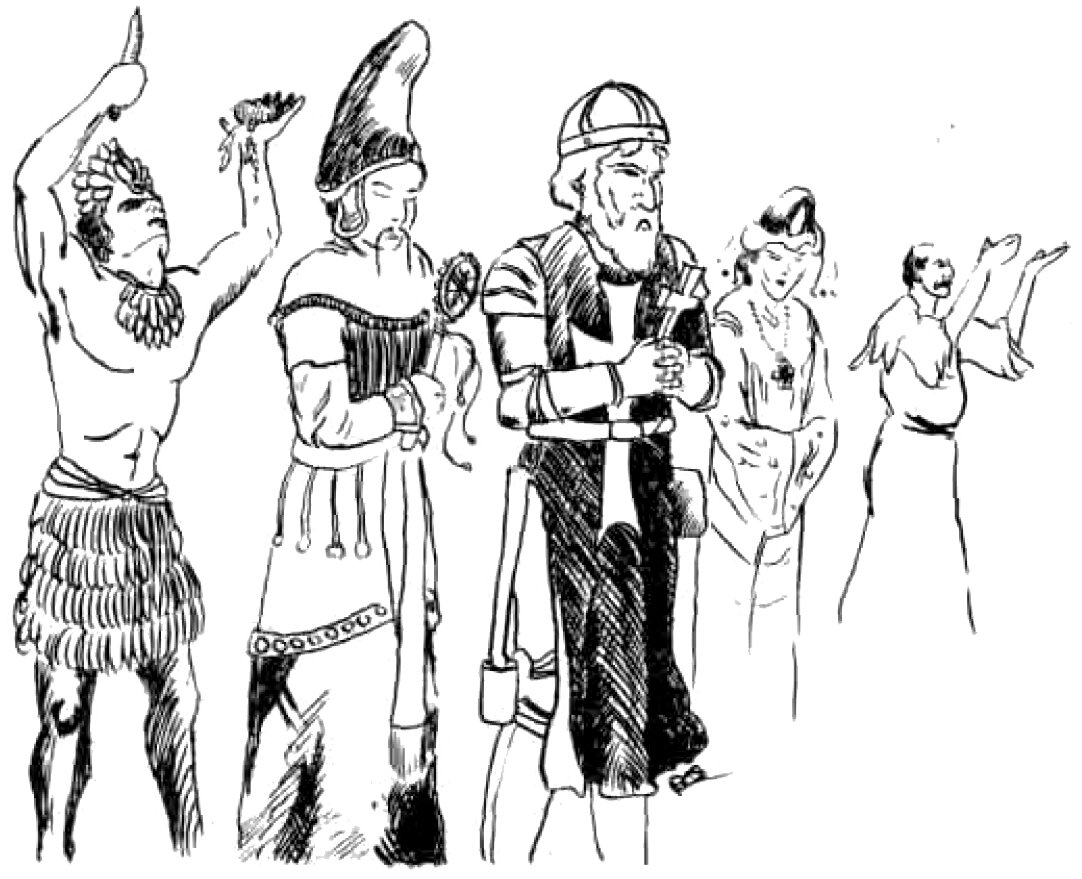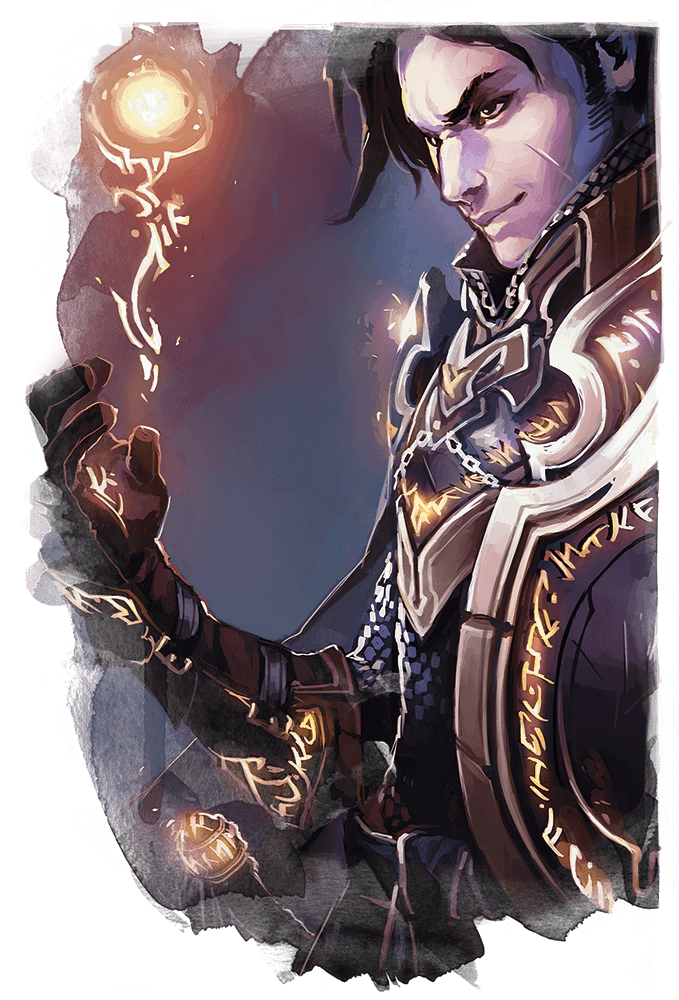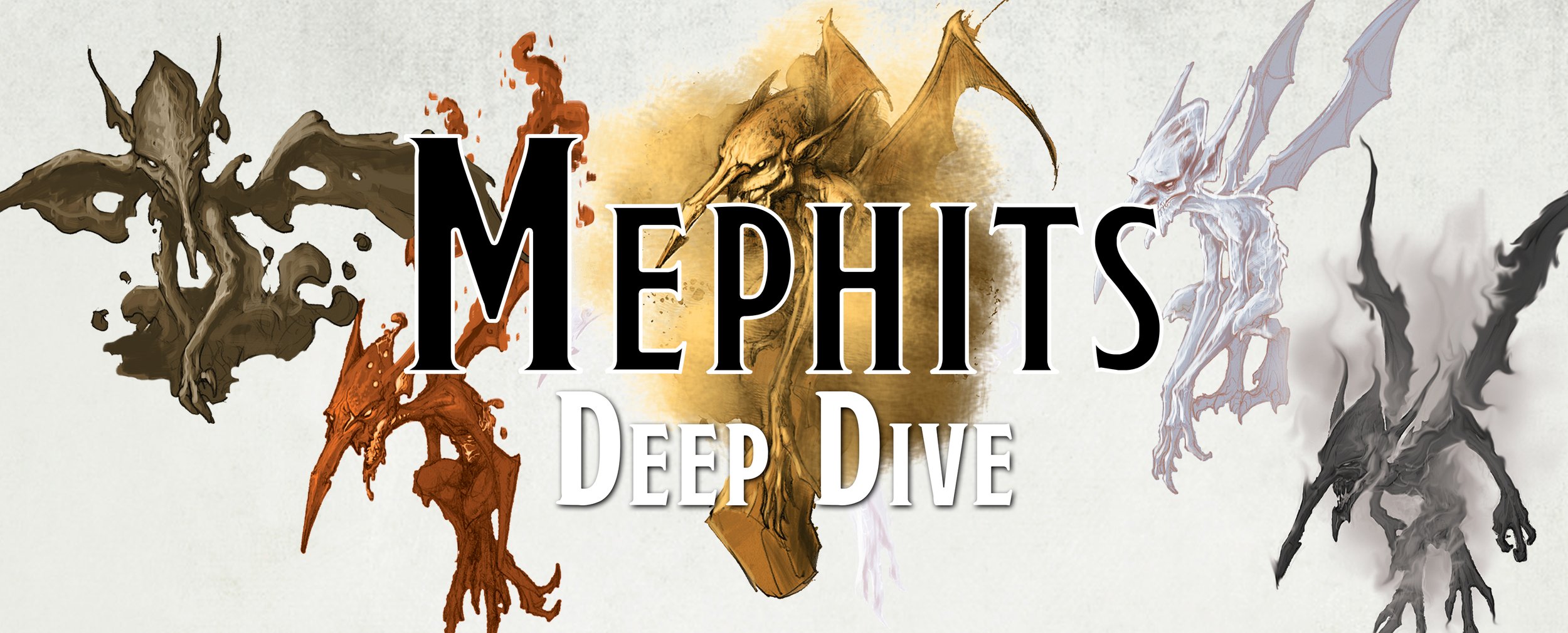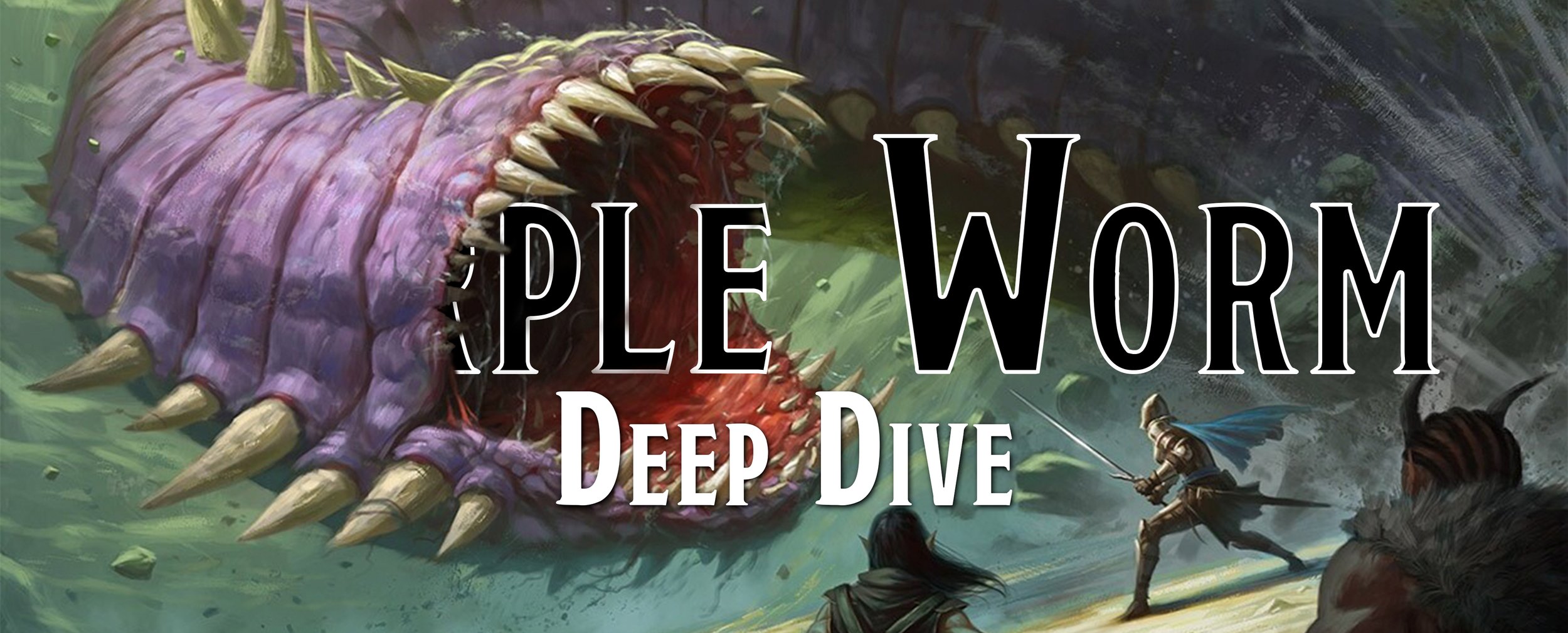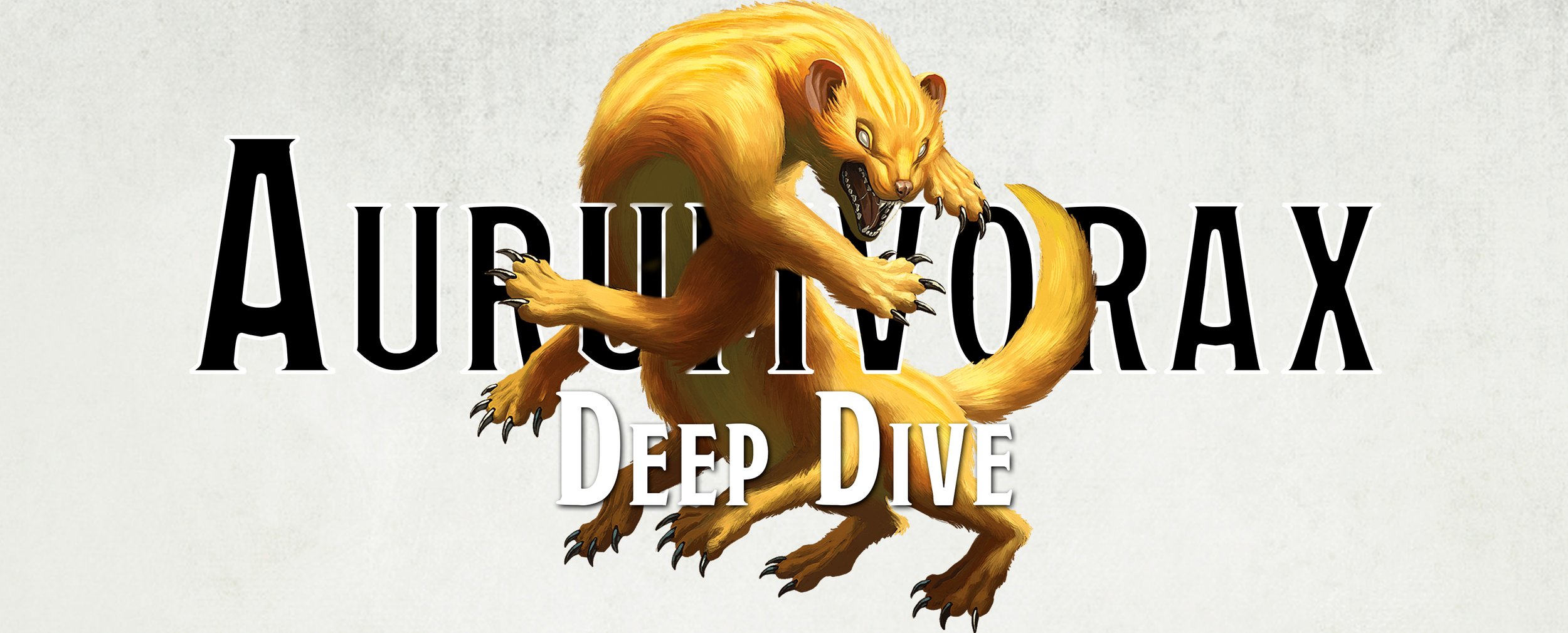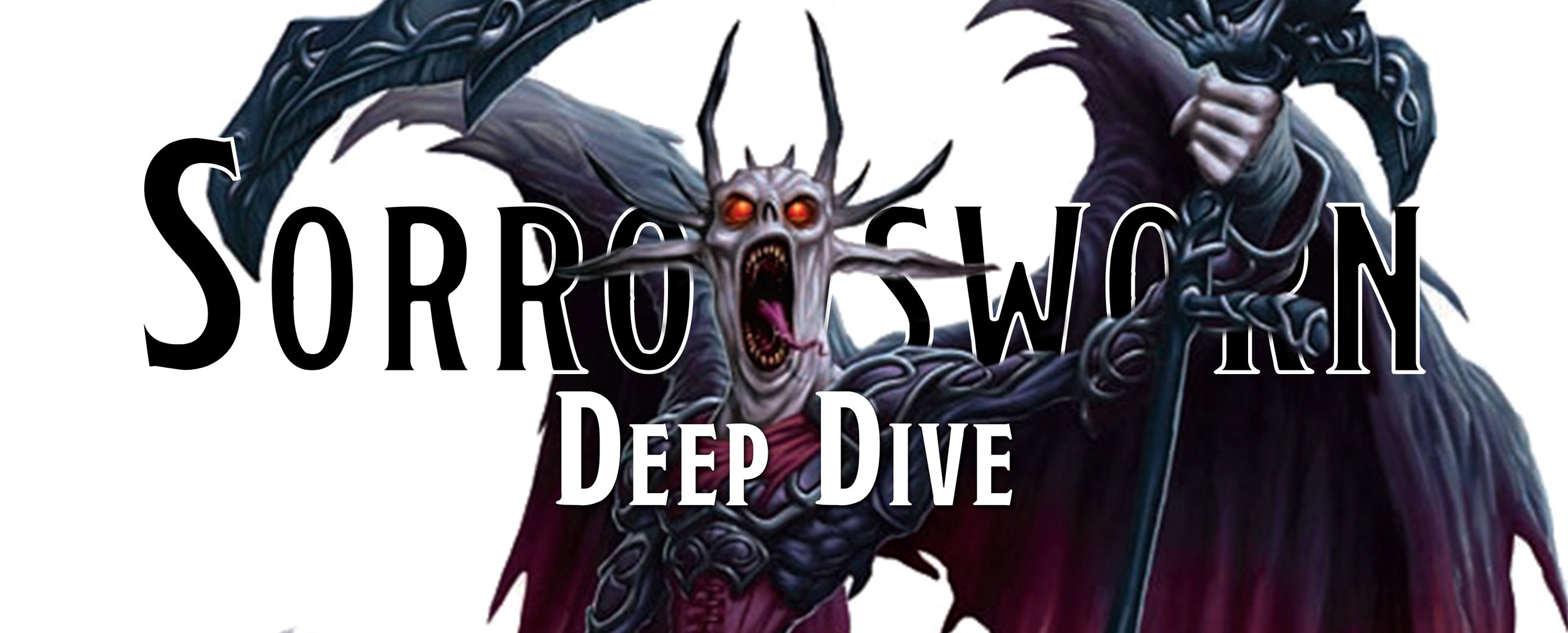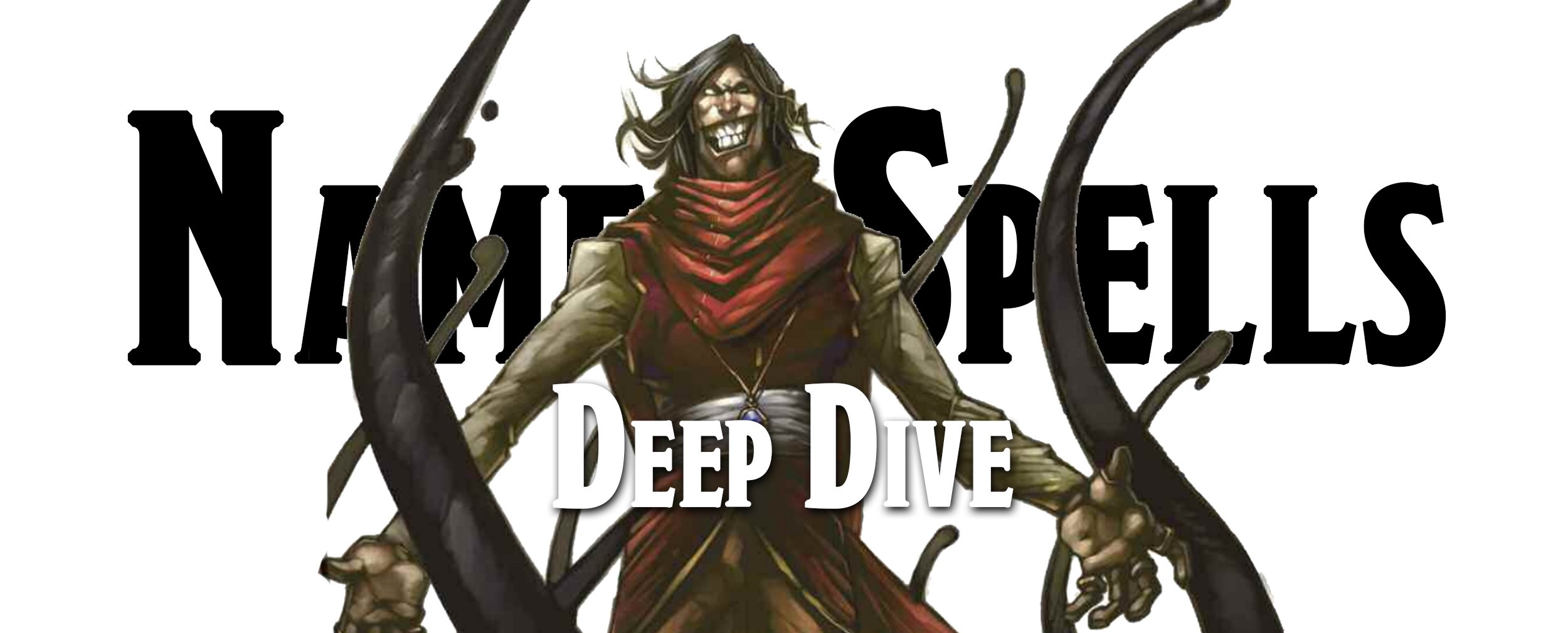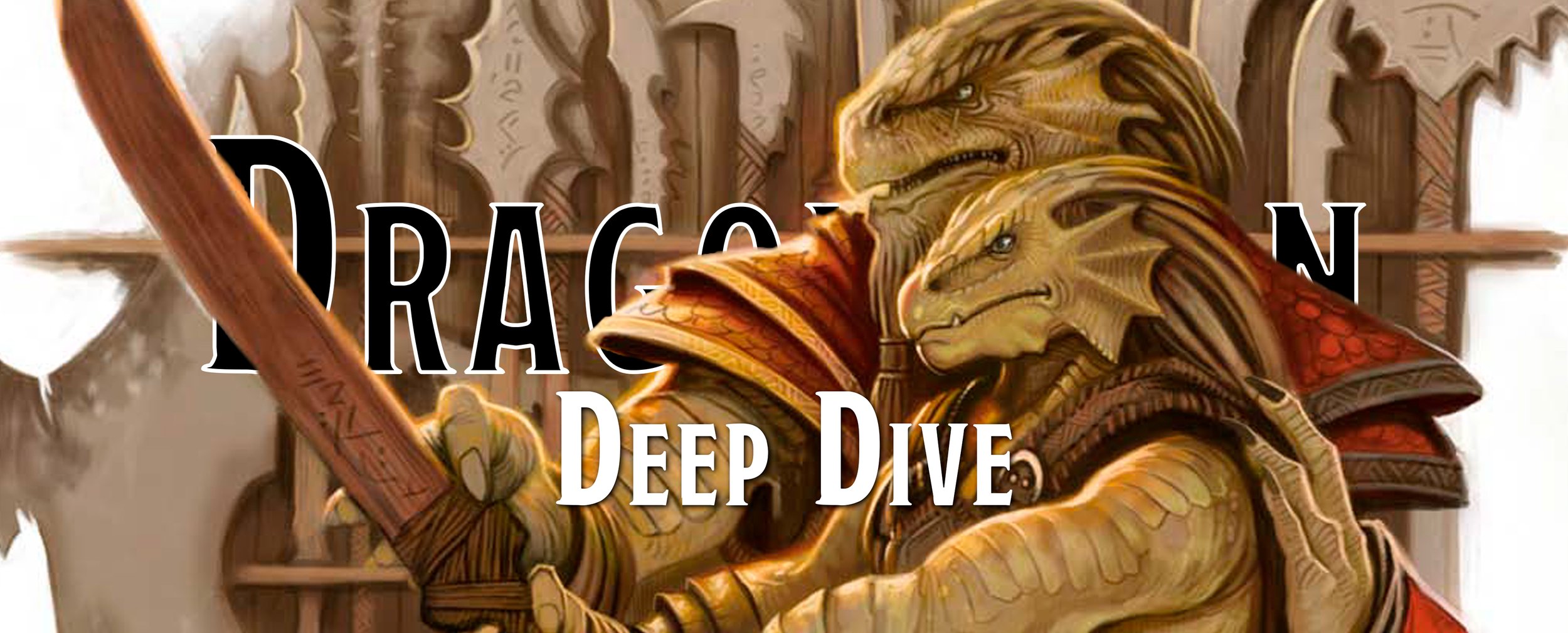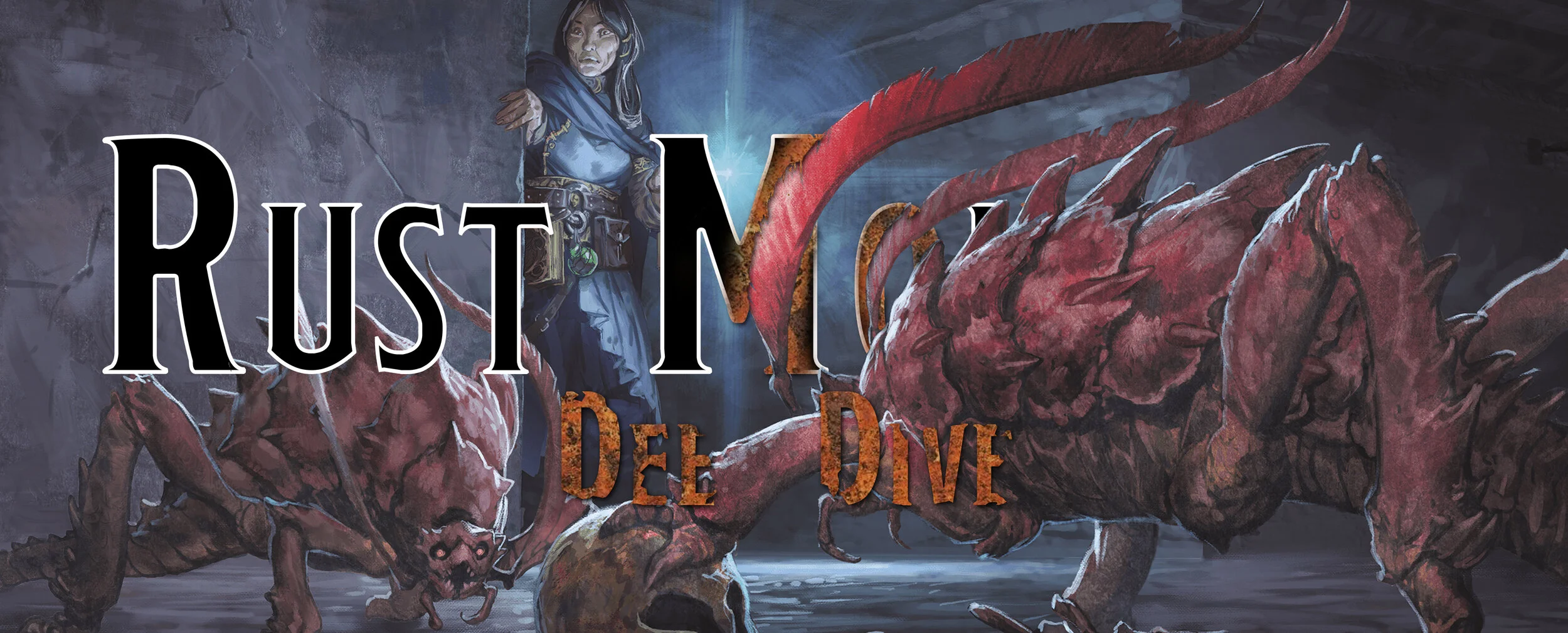Deep Dive - Cleric Class
Every time we look into a character class, we swear we will never do another. It's a labor of love, as they are always very long, and there are often strange rules that don't make much sense until you read the rest of the core rulebook. It's an exhausting process, and when it's complete, we promise never to take up such an endeavor again. But then time passes, and we forget. A request to look into someone's favorite class is received, and we think sure, why not, and the process starts all over again.
This time we were tricked into taking a look at the Cleric, a class known for it’s ability to heal with one hand and strike down their enemies with the other hand, sometimes at the same time. Without further ado, here is the Cleric, one of the original character classes, and their evolution through the game where the god they worship is constantly screwing them over compared to other classes.
OD&D
Key Features
• HP Die: d6
• Only humans are allowed to be Clerics
• Gains Turn Undead
• Two subclasses: Monk & Druid
• Only class with healing spells
The Cleric is introduced in the Dungeons & Dragons Box Set - Book 1: Men & Magic (1973) as one of the three original character classes, along with fighting men and magic-users. A Cleric was a combination of the fighting-men and magic-users skills, having the best abilities of both classes at its disposal, though that means it’s not that great when compared directly to them. As with most descriptions in this book, it was rather short, both in words and in detail. Clerics could use magic armor and are forbidden from using edged weapons that could stab or slice, including arrows, which means a Cleric could only bludgeon you to death. We suppose they didn't want to get too much blood on their robes, but your smashed brains are fine. The remainder of the text focuses on what our Cleric can do when they reach the 10th level, receiving the title Patriarch, 10th Level. Patriarchs can build their very own stronghold for just a mere 100,000 in gold pieces, and if you wanted to make it a literal fortress, you could do so for an additional 100,000 gp. Unlike the fighting-men, the Cleric's followers do not require payment as they are men of faith, pledging themselves to the righteous cause in the name of their god.
Speaking of Cleric followers who show up at a fortress, you might think it would just be the soft men of the cloth who will burn some incense and sing hymns about their favorite god, but not so. All those who come to the fortress are armed to the teeth and are “… 10–60 heavy cavalry, 10–60 horsed crossbowmen (“Turcopole”-type), and 30–180 heavy foot.” Every Cleric apparently needs a military force to back them up.
Dungeons & Dragons Box Set, 1975 TSR Inc
Clerics also have the fastest level progression of any of the other two classes, though only at the lowest levels. Once you get to 7th level, the magic-user starts outpacing the Cleric, which isn’t fair at all! Clerics already get fewer spells to cast, and don’t even get a spell to cast until they reach 2nd level! Even when they do get spells, they get less of them and they are unable to learn 6th-level spells, and they even have less available spells! Magic-users get 70 spells to eventually master while the Cleric only get 26 spells, it's starting to feel like the gods don’t like their Clerics.
The Greyhawk Supplement (1975) gives us further information for the Cleric and boosts them up just a little bit. We now know that the Clerics' primary attribute is Wisdom, which describes it as a 'booster' for their experience points. Unlike the magic-user, a higher Wisdom does not provide any assistance in learning or knowing any additional spells as all spells are given 'divinely' to the Cleric via their god. It's the first mention of the divine ability through which Clerics have been granted their spells, and is just one more example of a trait that has lasted throughout the years. The Cleric receives some new spells such as word of recall, symbol, and restoration, furthermore Clerics can now gain access to 6th and 7th level spells starting at 12th level. Unfortunately, this supplement also grants magic-users spells up to 9th level, so just another snub in the face and makes you wonder if the gods are even powerful enough to give their Clerics access to the more powerful magic.
In Blackmoor (1975), the Cleric gets its first subclass, the Monk. While at first glance, it may seem like a logical choice to be a Cleric’s subclass, what with the monasteries and writing religious books, it comes with some very strong negatives. The monk is a combination of fighting-men and thieves' skills with nary a Cleric power to use, and to even qualify to be a Monk you need at least a 15 in Wisdom, 12 in Strength and a 15 in Dexterity. The Monk has increased fighting techniques, and while its weapon choices are limited and they cannot wear armor, some of the abilities they get in return are insane. One such example is when the Monk hits you with its fists and lands a blow that is 5 points higher than is needed, there is a 75% chance you will be stunned for 3d4 rounds and a 25% chance that you get punched so hard you immediately die. Sometimes, life isn't fair.
The Monk gains a variety of thief abilities which include lock picking, removing traps, and moving silently, to name just a few. Now you may be thinking this is incredible, especially when combined with the Cleric's standard list of abilities, but you'd be wrong. Monks have no spell casting of any sort and cannot Turn Undead. So why are they a Cleric subclass? Based on the description and the types of skills the monk has in this edition, we honestly have no idea except you need a really good Wisdom… for some reason?
The last thing to mention about Monks is that their level progression is a bit… weird. The weird part is that once you reach level 6 and become a “Grand Master” you are stuck at that level until you get enough experience points to level up, but you can’t level up until you find a level 7 Monk who is known as the “Grand Master of Dragon” and then proceed to beat them up. You see, there can only be one 7th level monk, apparently in the world, and it continues from there. There can only be one 8th level monk, or 9th level monk, and so on. Each time you wish to level up, you have to go find the Grand Master of that level, beat the snot out of them and take their place, we assume you get a colorful belt for doing so. The loser of the battle immediately loses all experience to the minimum of the level below them and must retrain to challenge for that position again.
With the release of Eldritch Wizardry (1976), the Cleric has the opportunity to gain the much-maligned powers of psionics and gains a new subclass, the Druid. If Clerics wish to be given the chance to melt someone's brain, it comes at a high cost. For every psionic ability that a Cleric takes, they lose a number of spell levels equal to the cumulative number of psionic abilities they have, and their Turn Undead ability is treated as if they are a level lower for each psionic ability. This means that if a Cleric is level 10 and has three psionic abilities, they’d have lost access to six spell levels and they would be treated as a 7th level Cleric for their Turn Undead. Those six spell levels could be six 1st-level spells they can never learn, three 2nd-level spells, or another combination of spell levels that will restrict their spells… it’s all very confusing but once you get into psionics, it only gets worse.
Jumping over to their newest subclass, the Druid, who was originally a monster in the Greyhawk Supplement, our nature-loving Cleric no longer serves a deity but instead serves nature, and in exchange, they get access to spells at their first level, which is just another great slight against their base class, Cleric. A couple of pointy edged weapons are also available to the Druid, and they only get to wear leather armor and wooden shields. While they lose the ability to turn the undead, they do get powers at various levels that are specific to their bond with the outdoors. They can identify most things found in the great outdoors such as plants and animals, and even walk through a dense patch of overgrown briars. They can change shape into an animal, like a raven or a bear, and speak a stupid amount of languages of things found in the forest. Druids won't kill an animal if they don't have to, making one wonder why they wear leather armor. They also won't destroy any form of nature no matter what, even if it is an evil bush trying to scratch them to death with its tiny branches. In short, they are the Lorax, and they speak for the trees.
Druids are also similar to Monks in that they have to go around and start beating up other Druids if they hope to get higher than 9th level. Once you gain enough experience points to reach 11th level, you have to find one of the four Druids in the world, beat one up with your spells, and steal their position from them. If you want to get to 12th level, you need to find one of the two Archdruids, and beat them up. If you hope to reach the 13th level, the highest level for Druids, you need to find the only Great Druid in the world, give them a wedgie and steal their antler crown. This entire procedure means that only the strong will rule, which is probably befitting of nature.
Basic D&D - Cleric
Key Features
• HP Die: d6
• Wisdom 13 and over provides bonus experience
• Must use a Holy Symbol to cast spells
• Gain Destroy Undead
Basic Set, 1981 TSR Inc.
Our divine warrior is looking a lot like the Original Dungeons & Dragons Cleric but has a few new restrictions placed on them. They must pledge themselves to a divine being, always wear their holy symbol, and still go through first level, survive it, and then get spells at 2nd level. It’s like their god wants them to die before they get to taste some of that sweet divine power. On the other hand, maybe the Cleric's god wants to test their new follower's worthiness. Who knows.
Once the Cleric does get spells, they will understand why they need to learn to fight, as a vast majority of their spells are buffs and heals, with very few damage spells. Clerics are given the ability to reverse their spells, like turning a cure light wounds into a cause light wounds, but it comes at the risk of upsetting their god, and you don't want a supreme being mad at you. If your deity is mad at you, they can be quite unforgiving and take your spells away from you. Reversing spells is just one way to piss off a god, though chaotic gods don’t actually care that much and chaotic Clerics are almost always required to reverse their spells unless they are helping out their allies.
Basic Set, 1983 TSR Inc.
Bashing the skulls with non-edged weapons and being able to cast spells is still what the Cleric can do when they encounter any living creature, woe to any undead they happen across though. This edition gives the Cleric the ability to not only turn an undead zombie, but at higher levels, they can begin simply destroying the undead. This begins at 4th level against skeletons, 5th level for zombies, and more until they get to level 14 where they can destroy a vampire!
Money plays an important role when playing a Cleric and by donating and tithing you can ensure that your god is always on your side. While the divine beings expect you to pray, and in fact, each morning you have to pray for an hour to even get your spells for the day, money makes the world go round. This tithing is especially important for Clerics who are thinking about building their fortress of divinity at 9th level, and, if they have been a very good Cleric, get to build their 100,000 gp stronghold for only 50,000 gp thanks to their deity. Once established, the pious will arrive, consisting of up to three hundred 2nd level soldiers that will follow your orders and protect your temple fortress.
Basic Set, 1983 TSR Inc.
Basic also provides information for a Cleric that reaches such astronomical levels as 36, and they still don’t get access to 9th level spells! Instead, they end up with 9 spell slots for 1st- through 7th-level by 36th level and their Turn Undead can eventually get strong enough to destroy nightshades, but sadly still not powerful enough to immediately destroy a lich, only turn them. For those who aren’t aware, nightshades are powerful evil creatures created to go about the lands and spoiling it with foulness and evil. Nightshades can spoil food, holy water, and even summon undead to help their ultimate goal of death and destruction, in later editions these creatures can be found in the Plane of Shadow and one of the mid-tier nightshades even shows up in 5th edition as the CR 20 nightwalker.
Basic Set, 1983 TSR Inc.
1st edition - Cleric
Key Features
• HP Die: d8
• Gain spells at 1st level
• One subclass: Druid
• Castles must be a place of worship
Player’s Handbook, 1978 TSR Inc.
Our Cleric now can rejoice for they get a d8 for their hit points and they get access to spells at 1st level! Of course, they only get 1 spell slot per day, but they also get Turn Undead, so it kind of evens out? On a small side note, this isn’t the first edition to give Clerics a d8 for their hit dice as there is a variant rule in OD&D that provides different hit die for each class, magic-users had a d4, Clerics a d8 and fighting-men had a d10.
Once a Cleric reaches the all-important 8th level, they can then find a building that is not less than 2,000 square feet so there is enough room for an altar, shrine, and more, they can now conduct their sermons there. The culmination of months and years of game time, slaughtering monsters, and facing death a countless number of times, you finally are given the go-ahead from your deity that you can set up an altar for them in an empty building… gee, thanks. Once you get to 9th level, your deity will now allow you to build a fortification though you better make sure it is at least 2,500 square feet and there is a place of worship in there or else you aren’t going to be on speaking turns with your preferred deity… these gods are starting to sound a bit needy.
Before we get into subclasses, let’s go over a few things to know before you create your brand new Cleric to fight the horrors and get your just rewards of only 7th level spells but still forced to build a temple to a deity who may refuse to talk to you if you break just one of their laws. Wisdom is still the attribute the Cleric needs the most, while Strength and Constitution are the other two stats that are also recommended. If you want to be a Cleric, make sure you are a human as only half-elves, half-orcs, and humans are apparently allowed to worship and spread the god’s name to the masses. Of course, even then only humans can advance to the high levels as half-elves stop at 5th level and half-orcs at 4th level.
A big change for the Cleric is that the monk is no longer a subclass, but we still keep the Druid! The Druid is similar to a Cleric in… some ways? They can’t do Turn Undead, but they get additional spell slots to cast their unique spell list and they follow nature. Nature doesn’t expect the Druid to build a fortification in its honor, and in fact, they don’t have any buildings they must make, instead, they just get a few people to follow them around, presumably save some animals, stop a forest fire, and have fun dancing through a prairie singing songs about mountains or something. Of course, that all ends as soon as a Druid is ready to become a 12th level Druid and they have to start bashing in some skulls and breaking kneecaps so that they can become a more powerful Druid. If they fail to bring down a 12th level Druid, they don't level up to 12th level and lose their experience so that they start at the bottom of 11th level and must work their way back up. Eventually, the Druid will get strong enough to challenge the Great Druid for their antler crown and be the most powerful Druid in the world, of course now you have to worry about those young upstart Druids with their free love trying to take you down.
We also find out that the Cleric is similar to several religious orders of knighthood from our Medieval period, with the Templar knights and Teutonic knights being the most well known of such orders. There was some confusion between the Cleric and the paladin, which is a subclass of the fighter. The primary difference between the two character classes is that a Cleric must serve a god of their choice while a paladin is under no such obligation. Most people assume that since the paladin has some of the same spells and the ability to heal that they must get these powers from a deity of some sort, but their description makes no mention of having to serve a god. Paladins must only be of lawful good alignment, and if they commit an evil act, they are immediately demoted to a fighter.
Deities & Demigods, 1980 TSR Inc.
While the Cleric has always been a defensive-minded spellcaster, this is even more apparent when you look at the spell list available to them now. Up until 5th level, the Cleric only has two spells that deal damage, spiritual hammer and sticks to snakes. Their spells provide a variety of benefits to the party, including the ever-important ability to heal, but they can also cure diseases, remove curses, and slow poison, just to name a few. In combat, the Cleric is usually a round or two behind in joining the front line next to the fighter, as they would use those first few rounds to buff their fellow adventurers, and then start smashing skulls in with their mace.
Outside of the Player’s Handbook, there are several articles in the Dragon Magazine that provide new options for Clerics like spells, roleplaying a Cleric, and even a new NPC subclass. In Dragon Magazine #58 (February 1982), Gygax admits that the Cleric spell is lacking and recruits Lenard Lakofka to come up with some new spells to add some punch to the Cleric. In his column Leomund's Tiny Hut, new spells are created, including magic stone, which still exists today, even though the Cleric doesn't have access to it anymore, which… alright, at least druids get it. His follow up in Dragon Magazine #68 (December 1982), Lakofka introduced the cloistered Cleric, an NPC who is physically weak but a formidable force when it comes to spellcasting and knowledge. Referred to as a friar, these Clerics often live in an abbey or library, their heads buried in books.
Dragon Magazine #85 (May 1984), features the Cleric, with some articles dedicated to the voice of the gods. There's a couple of exciting tidbits we glean from the materials. In Here's to Your Health, author Kim Mohan talks about how damage is life energy, and it is deposited into a repository just waiting for the Cleric to make a withdrawal via their healing spells. Roger E. Moore expands on Gygax's series of earliest articles, describing how Clerics can be granted special powers, along with some restrictions, by deities of various mythos including the Egyptian, Norse, and Orcish belief systems. In the final article, Fraser Sherman writes an interesting piece on roleplaying your Cleric based on the deity that you worship. It's an exciting piece, encouraging those who play Cleric to think about what their god would do when faced with a situation and act accordingly. Roleplaying was just becoming an integral part of the game, and don't forget that we are only one edition removed from Dungeons and Dragons, being primarily a combat-based war game. They wanted players to think WWTD, What Would Thor Do, and this is just one more example of how the game was starting to shift away from its roots and into the game, it has become today.
The last bit of love for the Cleric continues in Dragon Magazine #92 (December 1984) with another series of articles titled Spotlight on the Cleric. There is a helpful little article by the master himself, Gary Gygax, which talks about Clerics walking the walk and talking the talk when it comes to following their faith. He talks about limiting access to spells and abilities based on the Cleric's deity, but in return, allowing them to gain access to spells from a different class that would fit its background and beliefs. The next two articles revolve around spreading the right word of your god. We are supplied with a conversion chart since a cleric's job is more than just turning undead, the more followers you can bring into the fold, the happier your god will be, and as a reward blesses you with even more of their holy power.
2nd edition - Priest
Key Features
• HP Die: d8
• All races can be a Cleric
• Cleric falls under the Priest Cleric
• Three Subclasses: Cleric, Mythos Priest, Druid
Player’s Handbook, 1995 TSR Inc.
Moving into the 2nd edition, the Cleric undergoes some exciting changes. First, every class gets reorganized and there are now four primary class categories: the warrior, wizard, Priest, and rogue. Each class has its subclasses to further refine your choice with the Priest including three such subclasses: the Cleric, Mythos Priest, and the Druid. To understand the Cleric, one must first understand the Priest.
The Priest is a true believer, one who travels the world and spreads the word of their god, sharing blessings and mimicking the ideals of their god. A Priest can be a force on the battlefield, whether by the sword, er mace, or by the divine power bestowed upon them by their deity. While the majority of their spells can aid someone in battle instead of dealing damage, the few that do damage rain down the fury of their higher power.
Speaking of spells, the Priest spell list, and therefore the Cleric spell list, gets a bit more complicated in 2e. Spells from the holy powers split into 16 spheres of influence, similar to the different schools magic that wizards have, though these are based on what a deity oversees. The 16 spheres are All, Animal, Astral, Charm, Combat, Creation, Divination, Elemental, Guardian, Healing, Necromantic, Plant, Protection, Summoning, Sun, and Weather. To make it even more confusing, you can have major or minor access to these spheres, determining what level spells from the sphere you will be able to use. If you have major access, you can use all the spells from the sphere, while minor access gets you 1st-, 2nd-, and 3rd-level spells from the sphere. You don't get access to every sphere, though Clerics are far less limited than the Mythos Priest or the Druid.
The Cleric class itself sees no big surprises in the base class itself. The hit die is still a d8, a Cleric is still the bane of all things undead, and they still want to build a castle or place of worship, and has devoted followers that rush to their side upon reaching the 8th level, though now they are 0-level fighters. The base Cleric still has limitations on what weapons it may use, being only able to wield blunt ones to prevent the shedding of blood. It's ok to bash someone's head in, but not cut there head off because those are so different. It's their spells that give a Cleric their real power, as they are looked upon to strengthen and fortify their comrades, heal the wounded, and provide divine retribution when all else fails. All in all, it's not a bad gig if you can get it… still gotta wonder why every cleric is so obsessed with building their own fortification and that a god forces them to wait until 9th level to do it. One day, an adventurer won’t be able to swing a sword without striking a temple and angering a divine being.
Clerics get major access to every sphere of magic except for Plant, Animal, Weather, and Elemental spheres, though they do gain minor access to the Elemental spheres. But, let’s say you want to be more than just a normal, boring Cleric and instead want to take on a greater position with your god and follow them with greater gusto, you can choose to take on the Mythos Priest subclass and further restrict your spheres of magic and get even more power.
When creating your Mythos Priest, you’d work closely with your DM to determine additional weapons allowed, spells allowed, including what spheres are major vs minor, additional divine powers that the gods bless down on you, an ethos to follow and guide you, as well as getting a new priest title like Friar, Imam or Yogi. The most interesting part of building a Mythos Priest are the powers you could earn, which might range from radiating an aura of fear, going into a berserker’s rage, or more based on your deity and what your DM decides should be your power. See, a Mythos Priest has no set power that they get but rather must work with the DM to determine what their power and progression will look like.
Player’s Handbook, 1995 TSR Inc.
The last option for a Priest is becoming a Druid, and not much has changed from the previous editions. Gotta go beat up stronger Druids to take their place, you can speak the language of druids, you get to change shape into an animal, you like nature and it provides its power to you. For all the goodies of being a Druid, like beating up other Druids, they are restricted in their spells and only have major access to All, Animal, Elemental, Healing, Plant, and Weather while having minor access to Divination spells.
If you think that the Player's Handbook had a ton of information, the 2nd edition will make your head spin with new options and more customizations for your Priest. The Beginners Guide to the Priest (1994), inside of the Player’s Pack - Priest, is a short piece that helps out the newbie who wants to play a Priest, with all the power and glory that comes with playing this role. It’s a detailed look at abilities along with how to appropriately roleplay such an important character and their pivotal position in any party. The Druid is also touched on, presented as a viable option for new players to play, as well as tips for how to paint your very own Priest miniature! What's great about this guide is it even goes over the character sheet, breaking down in language that is easy to understand, and provides information on the best practices of mapping.
The Complete Priest’s Handbook, 1990 TSR Inc.
The Complete Priest's Handbook (1990) is 128 pages of information about the Priest and contains a ton of information that a DM can use and add to their game, this has several useful resources that a DM in 5e could use. There are rules and guidelines on how to create a deity, how to model their faith and religion, and even ways of roleplaying certain types of priests. Priests of such newly created faiths assign duties to the members of the priesthood, and the restrictions placed upon them. A Cleric’s life can be very as their deity demands a great deal from them, but with great responsibility comes the chance to wield great power.
A long list of suggested types of priesthood are provided along with kits that contain background lore and what the deity's roles and requirements are for a priest that follows them. Alignment, race, armor, and weapon restrictions are detailed, along with minimum stat requirements. Since this is in 2nd edition, spheres of influence are given, so if you want access to combat spells, you'll know not to become a priest of fertility. Some are quite common, such as healing, strength, and death, but if you want to play something outside the box, there are several options. These kits and equipment options help our priest arm themselves with the necessary items they will need based on the type of role they are playing or even where they are from in the world, like the rain forests,, barbarian encampments, and other locales or backgrounds.
The last book to look at for 2nd edition is The Tome of Magic (February 1995) which provides the Cleric with a ton of new spells and provides the DM some information about magic and introducing these new spells into their world. The most interesting spells are the Quest Spells, which are some of the most potent spells a Priest can receive from their power. These are not your run of the mill spells, but rather are often very powerful spells that a Priest is bestowed upon under exceptional circumstances. Priests have to meet all sorts of requirements to receive Quest Spells, ranging from minimum stat and level requirements to having performed his or her duties throughout the campaign. A DM must be very careful when giving out a Quest Spell, as they can be game-breakers.
The book also provides eight additional spheres that a Cleric could start learning which include: Chaos, Law, Numbers, Thought, Time, Travelers, War, and Wards. Looking at a few of these, as some are a bit weird, let’s first talk about the Number sphere. This sphere is for those math geek Priests that think equations can solve all the world’s problem, on the other end of the spectrum is the Thought sphere which is focused on philosophy and it solving the world’s problems. Travelers’ sphere is all about going for a nice long journey and ensuring you arrive safely, while the Wards sphere is about keeping sneaky rogues from pilfering all your stuff.
Most of the spells in this book never see the light again, but a couple still exist today such as the zone of truth spell and the… oh, hmm. Apparently zone of truth was the only spell worth keeping… awkward.
The Complete Priest’s Handbook, 1990 TSR Inc.
3/3.5 Edition
Key Features
• HP Die: d8
• Druid is no longer a subclass
• Spontanous casting for cure or inflict spells
• Domain spells granted by a god
Player’s Handbook, 2000 / 2003 WotC
Perpetuating the stereotype that the role of a Cleric is to only be a healer, this edition does little to help the Cleric feel like a badass. It says that Clerics aren’t that great of a fighter and should cower in the back with the wizard… Alright, you got us, it might not say that exactly, but it’s implied. We’d like to see Dungeons & Dragons say that to the face of a Cleric wearing plate armor and a wielding a massive mace, we’ll wait.
Getting to the real parts of this class, let’s talk about the elephant in the room. By that, we mean the shape-changed druid who is no longer part of the Cleric. We can finally kick that deadweight out of this class! The next thing we can kick out are the 20+ spell spheres from 2e, and instead we now have domains but those don’t restrict what spells you have access too. You can, as a Cleric, cast any spell of your choice on the Cleric spells list, get a free domain spell to cast, and you even get access to 0-level spells known as orisons or cantrips. This is a much better situtation, magic-wise, for our Cleric when compared to the earlier editions where the gods expected them to run around without spells for their first level, and even for their second level they only had one per day!
Clerics are also given access to spontaneous spellcasting which allows them to change any of their prepared spells into either cure spells or inflict spells based on your alignment. Good aligned Clerics can change a prepared 1st-level spell into a cure wounds due to their connection to the Positive Energy Plane, just as Evil aligned Clerics can change a prepared 1st-level spell into a inflict wounds spell. Their connection to the Negative Energy Plane permeates them with foul and necrotic energies. Lastly, neutral Clerics get to choose which type they get, cure or inflict. Once they make their decision, they are locked in and can’t change.
Speaking of casting spells, guess who now has access to 9th-level spells? That’s right, the Cleric! It took their gods a few editions to finally get enough umph to help out their favorite worshipers, but now the Clerics are playing in the big leagues and can unload such crippling and horrible spells like implosion or true ressurection. Speaking of the older editions, the Cleric is no longer expected to build a castle for their god, so while that might piss off the Medieval real estate agents, at least now we can stop worrying about the inevitable day when the world would be covered in temples.
When you create a Cleric in 3e, much like in previous games, you must think about your character and their background in the world. This can help you decide on a deity to follow, and each deity, whether the ones provided in the Player’s Handbook (2000/2003) or ones that your DM has created in their world, provides access to different domains of influence. Those domains are: Air, Animal, Chaos, Death, Desctruction, Earth, Evil, Fire, Good, Healing, Knowledge, Law, Luck, Magic, Plant, Protection, Strength, Sun, Travel, Trickery, War, and Water.
Divine Power, 2004 WotC
Alright, maybe we lied about not having 20+ spheres of magic, but these domains don’t restrict what spells you can ask your god for. Rather, these domains grant you additional spells to cast plus new abilities for your cleric. If you worship a deity, you get to pick two of their domains that they are linked too, and then you get access to both of those domain spells as well as some special abilities you get. Taking the air domain for an example, you get access to the 1st-level spell obscuring mist as well as the new power to Turn Earth Elementals, which is the same as turning undead except you can now target earth elementals! Other domains grant different powers, like destruction giving you a smite ability and the luck domain granting you a free reroll once per day.
Because most deities have access to three to six domains, Clerics that follow the same deity may have vastly different powers. Of course, beyond a few special powers, Clerics are going to start looking a bit samey at higher levels when those special powers might not come into play very often. Instead, you can check out the Player’s Handbook II (2006) which provides different themes to help roleplay your Cleric a bit more. If you want something a bit crunchier than thematic fluff, you could check out a book like the Planar Handbook (2004) that provides new mechanics for a Cleric like being able to dismiss summoned creatures, though your effectiveness in turning undead is reduced.
Complete Divine, 2004 WotC
The last bit of Cleric news doesn’t have to deal with the Cleric themselves, but can be found in the Complete Divine (2004) and it is a variety of different Cleric-like classes that a character can be. From the Favored Soul to the Shugenja to the Spirit Shaman, each of these provide a different way of playing a divine spellcaster that is somewhat releated to being a Cleric. The Favored Soul only gets access to a limited number of Cleric spells, but have more freedom in how they cast and use their spells, making up for that flexibility with greater abilities in melee combat. The Shugenja is a charisma based Cleric focused on the power of the elements and its relationship to the divine blessings they are bestowed with. The final class, the Spirit Shaman, can interact with the spirits and souls of the dead, using them in combat to smite their enemies and heal their allies.
4th edition
Key Features
• Hit Points at 1st Level: 12 + Constitution score
• Hit Points per Level Gained: 5
• Key Abilities: Wisdom, Strength, Charisma
• Gain access to Channel Divinity and Ritual Casting
Player’s Handbook, 2008 WotC
While the terminology changes in 4e, at it’s core the Cleric remains the same. Right away, the Cleric is shown proper respect as it is described as battle leaders who are chock full of divine power. Healing, leading, buffing, and channeling the divine wrath of their deity are the traits of a Cleric who leads their party to victory. They are a shining beacon for their deity, embodying the beliefs and serving in their name. You are a part of the community of Clerics who have divine power, and your power comes from your connection to the divine, not because the gods touch your forehead every day and you learn some spells.
The first thing you'll need to figure out is what style of Cleric you'll want to be and there are a few suggestions, the major three options are the Battle Cleric and the Devoted Cleric from the Player’s Handbook (2008), and the Shielding Cleric which shows up in Divine Power (2009). The Battle Cleric loves to hit something and is focused on running into melee and laying down their divine wrath. Up next is the Devoted Cleric, who is focused on supporting their fellows with healing and buffs to empower their allies. The Shielding Cleric is responsible for controlling the battlefield by pushing its allies forward and the enemies back. These are only presented as inspirations for how to build your Cleric and offer suggestions on powers and abilities to take, none of these options restrict a Cleric from taking one power over the other.
Player’s Handbook, 2008 WotC
An important class feature a Cleric gets is something that most players of 5e would be familiar with, Channel Divinity. This ability allows a cleric, once per encounter, to use their powerful Turn Undead ability or, since one can assume that a Cleric is fighting more than just undead, they aren’t given a useless ability but simply can use it for something else like giving themselves a small blessing on their attack or saving throws. Apart from the Channel Divinity, Clerics are given powers every few levels to pick and choose from, just as if they were preparing spells, and are given a wide variety of options from healing, to buffing, to striking down their enemies with a fearsome vengeance.
We'd be remiss if we didn’t mention the paragon paths that Clerics can take once they reach 11th level. These paragon paths allow a Cleric to specialize a bit more on how they function, granting abilities and powers unique to them, they operate similar to how subclasses operate except aren’t the core of what the class is. The Player’s Handbook offers the following paths; the Angelic Avenger, the Divine Oracle, the Radiant Servant, and the Warpriest. The Angelic Avenger gets you in touch with your angelic side and you gain astral wings and gain powers to help you spread the word of your deity. A Divine Oracle sees omens and visions of possible futures, which you speak in the booming voice of your deity. The Radiant Servant a shining divine light of radiant energy, unleashing your wrath on those who stand before you. Finally, for those clerics that have a great deal of pent up rage, anger, and need to bash things, we have the Warpriest. Your god wants you in battle, upfront, and carrying out its will and philosophy by killing anything that gets in your way.
5th edition
Key Features
• HP Die: d8
• Key Abilities: Wisdom, Strength, Constitution
• Gain access to Divine Domains
• Unique Powers and spells granted by a deity
Player’s Handbook, 2014 WotC / Chris Seaman
Heavily inspired by 3e, our Cleric has many of its traits intact across the editions with making one significant change to a staple rule for the class. Spells are back in this edition, so that’s not it. Channel Divinity is kept from 4th edition, which is where you can find the Cleric’s Turn Undead feature and additional powers to help make a Cleric feel unique. You are still an agent of your chosen deity’s tenets and philosophy, who granted you your unique powers thanks to their divine will. Wisdom is still super important for you as a Cleric, as it dictates your spells and how hard you are to resist. All of those are the same, but the big change is… Divine Intervention. Now, you can call on your god, asking for them to intervene on your behalf and prove to all those jerks who kept saying your god wasn’t real. Let’s see them start running their mouths when your god literally hurls flaming meteors from the sky, crushing them beneath your burning rage… or maybe, your deity is a kinder deity and simply heals everyone from a hard-fought battle… you know, whatever type of intervention you need.
Because so many of the abilities are similar to the past editions, we are going to start with Divine Intervention, and then work backward. Once a Cleric reaches a certain level, they can ask for their deity to intervene on their behalf and there is a chance their god will listen. If the Cleric is successful, which the odds of being successful are about the same odds that a cat will listen to you when you call its name, it’s a big moment when the deity does answer and provides its power to the Cleric based off of any spell in the Cleric’s spell list which… well, I guess the deity can’t hurl those flaming meteors as those are only for sorcerers and wizards.
Player’s Handbook, 2014 WotC
Luckily for our Cleric, they have so many options when it comes to 9th-level spells they can ask their deity to help them out with, so many options… OK, you got us, 4 options for 9th-level spells! That’s ridiculous, we suppose the gods were too busy doing their nails to give their most powerful Clerics any more options. This just got depressing, let’s talk about the other exciting things that have to do with a Cleric.
There are several subclasses for a Cleric and they all provide the real flavor and powers of a Cleric. Not only do they grant bonus spells, but they also grant additional ways of using your Channel Divinity than only being able to use Turn Undead, with more powers to further refine your Cleric. The different domains, in the Player’s Handbook (2014), are the Knowledge, Life, Light, Nature, Tempest, Trickery, and War domains, each providing their own powers and ways to play a Cleric than just as a healer.
Each domain provides a unique feature to them using a Cleric’s Channel Divinity, like the life domain provides powerful healing to their allies or the war domain ensures that their allies strike true. Domains can also provide a lot of flavor for the Cleric, like the nature domain providing proficiency in nature-based skills and granting a druid cantrip. After that, every Cleric gains the ability to strike their opponents with divine energy, blasting them with radiant, fire, or even the power of lightning.
Xanathar’s Guide to Everything, 2017 WotC
Looking outside of the Cleric's Divine Domain, there isn't much else to the Cleric. Much like 3rd edition where a Cleric gets like two things and then has to rely on their spells to pull them through from level 1 to level 20, the Cleric class offers very few things for the divine follower of a powerful deity. Clerics can Turn Undead, they can Destroy Undead, and they can wield fearsome weapons and armor to protect them from their enemies. At least there is no restriction forbidding them from grabbing a sword and spilling some blood, all in the name of their god of course.
The Cleric in 5th edition is a culmination of every edition before it, maintaining it’s classic feel through each edition while still feeling new and exciting to play as. There are several abilities one might wish for the Cleric, like the AD&D Cleric could, instead of Turn Undead, Turn Devils & Demons, or that the 3e Cleric could choose two different domains to gain powers from. Of course, there are also things we are glad changed and never came back in 5th edition, like having a Monk subclass or not having any spells at 1st level.
Got something you’d like to see a Deep Dive on?
Let us know in the comments below!
If you enjoy our Deep Dive series consider
supporting us on Patreon and following us on Twitter!







